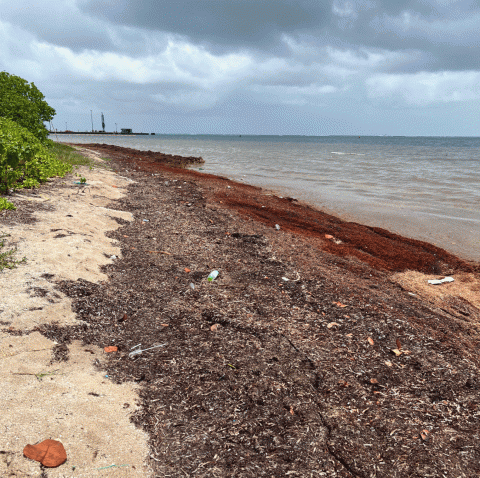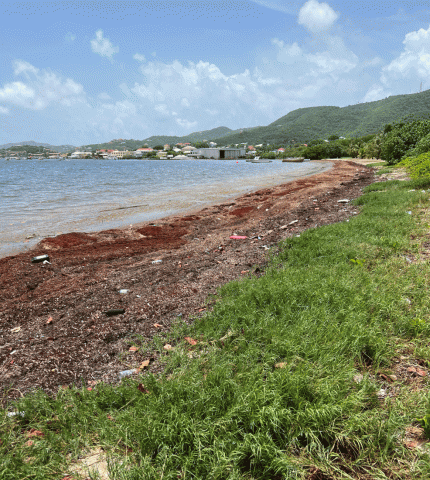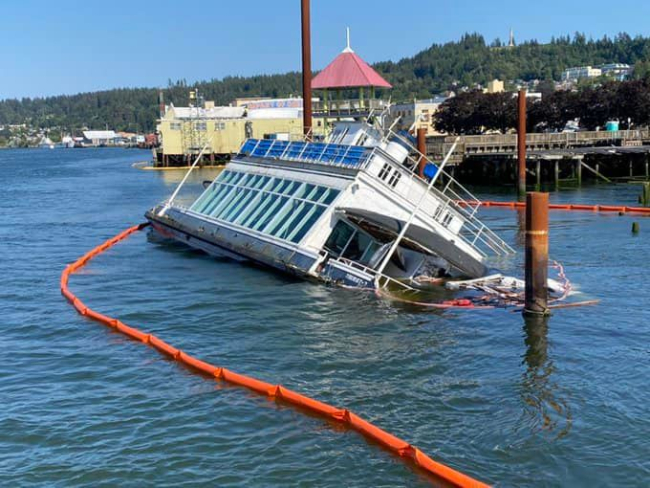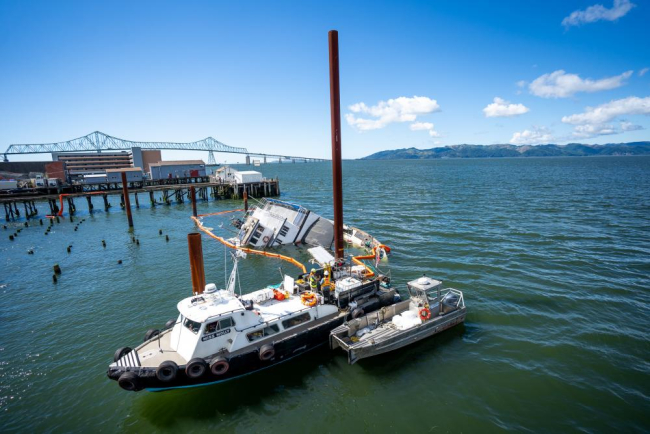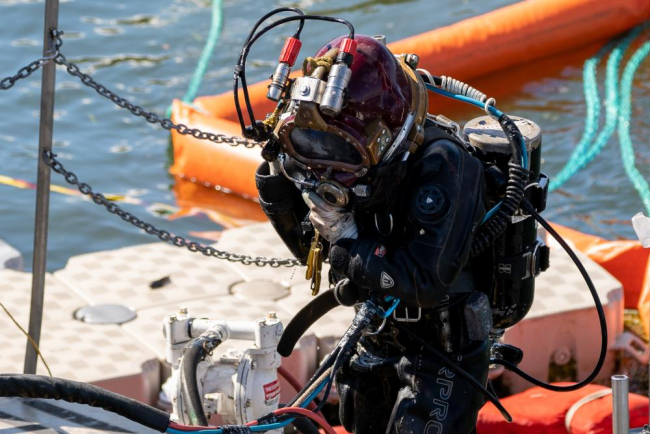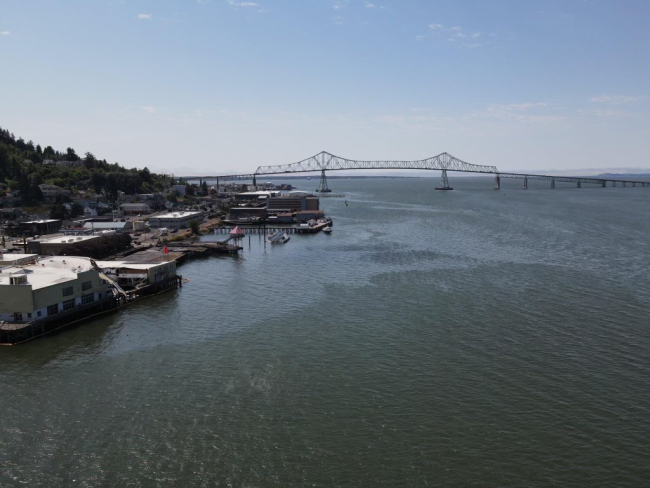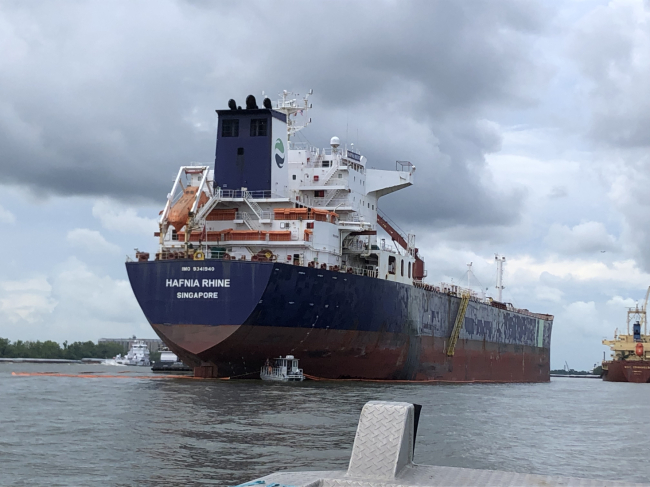Every month OR&R’s Emergency Response Division provides scientific expertise and services to the U.S. Coast Guard on everything from running oil spill trajectories to model where the spill may spread, to identifying possible effects on wildlife and fisheries and estimates on how long the oil may stay in the environment. We also get requests to track and model other floating objects.
So far this year, OR&R has provided support to 98 incidents. In July, OR&R provided response support to 21 incidents, including 11 new incidents in seven states and one territory (the U.S. Virgin Islands).
The new incidents included nine actual or potential oil spills, one freighter adrift laden with petroleum coke, and one declared federal emergency on the island of St Croix in the U.S. Virgin Islands due to high concentrations of sargassum seaweed affecting the island's desalination plant and primary source of water.
Staff prepared 147 new incident reports and documents, including nine fate and trajectory analyses. Cumulatively, these incidents posed an approximate risk of over 66,000 gallons of oils and 77,000 metric tons of chemicals. (Note: Spill volumes are approximate and based on initial information that may be updated after further investigation).
Here are some of July's notable incidents:
High Concentrations of Sargassum Affect St. Croix Desalination Plant and Primary Source of Water in the U.S. Virgin Islands
On July 27, NOAA scientific support was requested for a declared emergency on the island of St. Croix in the U.S. Virgin Islands due to high concentrations of sargassum that was affecting the island’s desalination plant and primary water source.
Responders with the Federal Emergency Management Agency conducted cleaning efforts to clear the area near the plant’s water intake, as well as planning for long term actions to prevent future issues. OR&R’s scientific support coordinator for the Southeast region provided on-scene support. OR&R also coordinated with NOAA’s Atlantic Oceanographic and Meteorological Laboratory in Miami to use their sargassum distribution and inundation products to develop more focused and specific trajectory support and better forecast future threats.
The SSC proposed natural collection sites be identified in the area contingency plan to improve statistical modeling for when areas such as water intakes and sea turtle nesting beaches could be at higher risk from sargassum inundation and concentration. NOAA analyzed photos and reports from the civil air patrol for drift forecasts and threat analysis. NOAA’s National Environmental Satellite, Data, and Information Service also provided focused and larger scale imagery for the region to help show sargassum locations that may affect the St. Croix area. NOAA also coordinated with the Department of the Interior and the U.S. Fish and Wildlife Service to assess risks to protect species, such as sea turtles and manatees.
The longer term response focus identified the desire to improve and utilize NOAA tracking and forecast products for sargassum, coordination with French models and forecasts that may be useful, and engineering initiative to better protect the intake from future events. As sargassum issues continue to increase in the area, response tactics used in this incident may support future response and prevention efforts.
1924 Former Car Ferry Partially Sunk in Astoria, Oregon
On July 28, the U.S. Coast Guard notified NOAA that a 1924 former car ferry had partially sunk in Astoria Oregon. A 300 by 400 foot sheen was observed around the M/V Tourist. The potential spill volume was approximately 500 to 600 gallons of diesel fuel.
OR&R provided trajectory support and reported on the resources at risk in the area. The Coast Guard concluded response operations on Aug. 5 after a diving and salvage contractor recovered about 525 gallons of oil from the vessel with pollution sorbent and pumping. Five cubic yards of hazardous material was recovered. The cause of the incident remains under investigation.
Bunker Oil Discharges from Tanker into Lower Mississippi River in Almedia, Louisiana
On July 28, a tanker reportedly discharged bunker oil into the Lower Mississippi River near Almedia, Louisiana. The estimated volume of discharge was approximately 10 to 20 barrels (or 420 to 840 gallons) of oil. The Coast Guard requested NOAA provide trajectory and on-site support for the incident.
The discharged oil impacted a large gathering of barges and a small section of mud and grass on the shoreline downstream, with a sheen descending along the left bank several miles downstream. Pollution containment boom and sorbent were positioned to prevent further impacts. The affected barges are being pressure washed and cleaned. OR&R will be providing shoreline cleanup assessment technique support once the barges are moved.
Here is the complete list of July’s incidents, click on the links to find out more:
- Oil Spill as a Result of a Break in a Transmission Line, Gulf of Mexico, LA
- 50-foot Yacht Sunk in Glacier Bay, AK
- Fishing Vessel Sunk at Pier, Neah Bay, WA
- Freighter Carrying Petroleum Coke Lost Propulsion, Dixon Entrance, AK
- 50-foot Sport Fishing Vessel Sinking, Pensacola Beach, FL
- 67-foot Fishing Vessel Sunk, 90 East of Gloucester, MA
- Above-ground Storage Tank Releases Used Cooking Oil at Norfolk Oil Transit, Norfolk, VA
- High Concentrations of Sargassum Affecting St. Croix Desalination Plant and Primary Source of Water, U.S, Virgin Islands
- 1924 Former Car Ferry Partially Sunk, Astoria, OR
- Bunker Oil Discharge from Tanker into Lower Mississippi River, Almedia, LA
- Diesel Spill at Navy Pier, Base Kitsap-Bangor, Silverdale, WA


